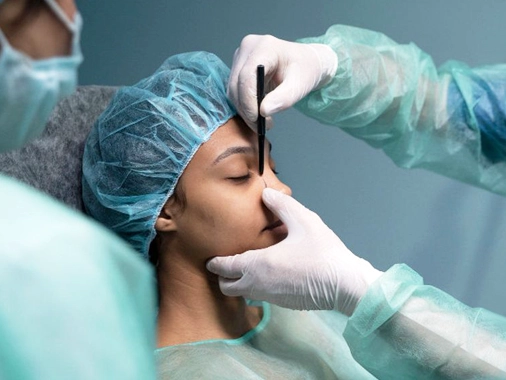
The turbinates, also known as nasal tissues, are bony and soft structures located inside the nose that help regulate airflow. Turbinates condition the air by warming, humidifying, and filtering it. However, enlargement or swelling of the turbinates for various reasons can lead to breathing difficulties. Turbinate surgery is a surgical procedure performed to address these issues.
Turbinate enlargement (nasal tissue hypertrophy) occurs when the turbinates swell or expand due to various reasons, such as:
Allergies
Turbinate surgery aims to relieve nasal congestion and help the patient breathe more easily. The procedure opens the airway, enlarges the nasal passages, and improves airflow.
Before the surgery, a detailed consultation is conducted with your doctor. During this consultation, the doctor identifies the causes of your breathing difficulties and evaluates the severity of the turbinate enlargement. The possible outcomes and risks of the surgery are also explained.
Some preparations may be required before the surgery. Your doctor will provide instructions regarding medications you should take or stop before the procedure.
Turbinate surgery is usually performed under local anesthesia or sedation. In some cases, general anesthesia may be preferred.
Several techniques can be used for turbinate surgery:
After turbinate surgery, nasal packing may be placed inside the nose. Mild discomfort, swelling, and minor bleeding may occur during the first few days. Full recovery may take several weeks. Your doctor will provide detailed guidance on what to watch for during the recovery process.
Like any surgical procedure, turbinate surgery carries certain risks, including:
Turbinate treatment depends on the severity of the enlargement and the underlying causes. Treatment usually begins with medication and, if necessary, surgical methods are considered.
Turbinate enlargement can often be managed with medical treatment:
Surgery may be required when medical treatment is insufficient. The most common surgical methods include:
During the recovery period after turbinate surgery, attention should be given to the following:
Benefits of Turbinate Treatment
After successful treatment, patients may experience:
Turbinate enlargement is a condition that can negatively affect quality of life but can now be easily treated with modern medical techniques. Treatment options are tailored to individual needs. If you experience nasal congestion or difficulty breathing, it is important to consult an ENT (ear, nose, and throat) specialist for evaluation.